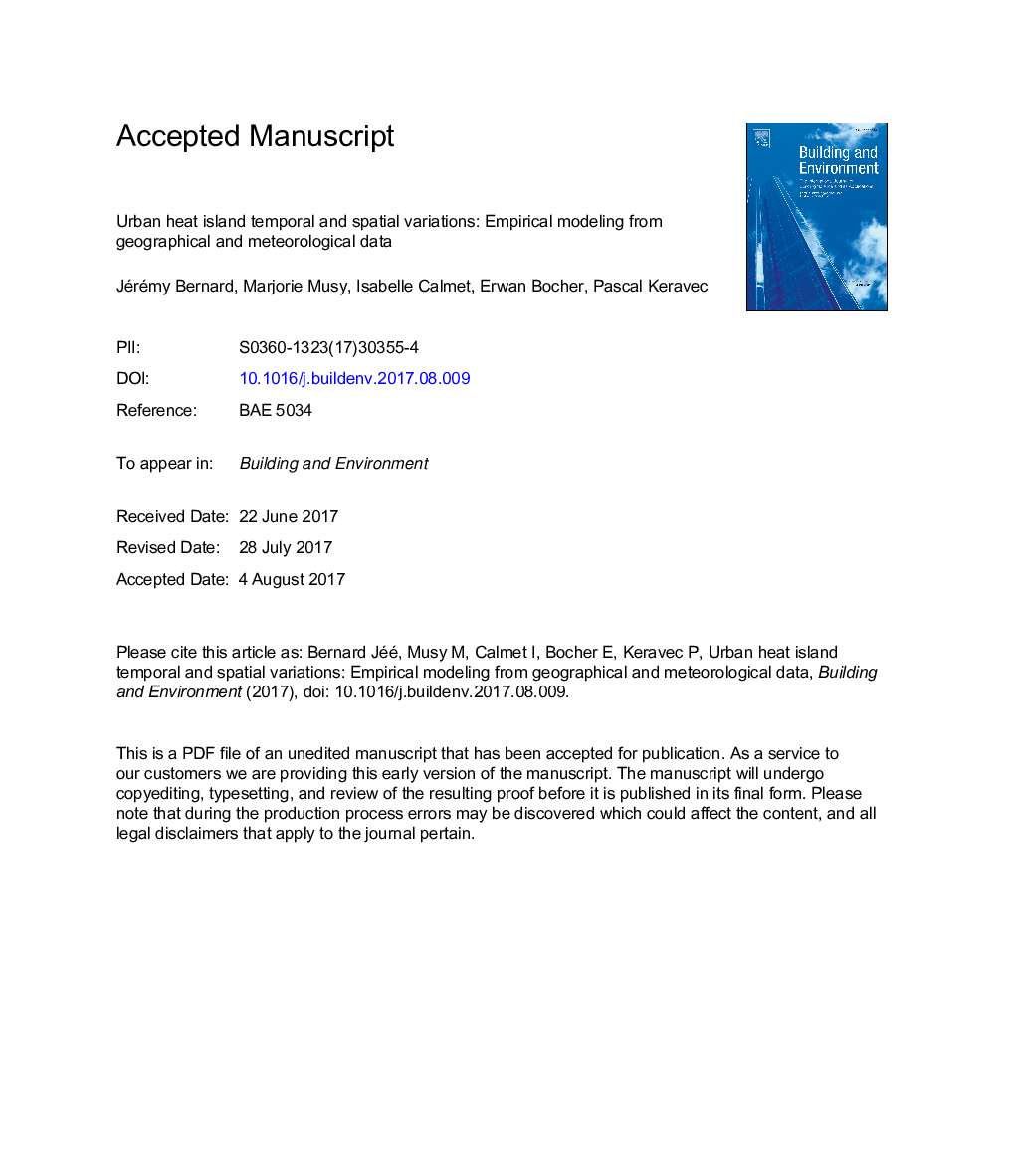| کد مقاله | کد نشریه | سال انتشار | مقاله انگلیسی | نسخه تمام متن |
|---|---|---|---|---|
| 6698573 | 1428367 | 2017 | 33 صفحه PDF | دانلود رایگان |
عنوان انگلیسی مقاله ISI
Urban heat island temporal and spatial variations: Empirical modeling from geographical and meteorological data
ترجمه فارسی عنوان
تغییرات زمانی و مکانی گرمایی شهری: مدلسازی تجربی از داده های جغرافیایی و هواشناسی
دانلود مقاله + سفارش ترجمه
دانلود مقاله ISI انگلیسی
رایگان برای ایرانیان
کلمات کلیدی
آب و هوای شهری، مشاهده دما هوا، مدل تجربی، جزیره گرمایی شهری، متغیر هواشناسی،
موضوعات مرتبط
مهندسی و علوم پایه
مهندسی انرژی
انرژی های تجدید پذیر، توسعه پایدار و محیط زیست
چکیده انگلیسی
Urban air temperature varies along time and space. This contribution proposes a methodology to model these variations from empirical models. Four air temperature networks are implemented in three west France cities. The period [1.4-1.8] of a normalized night is investigated. Three empirical models are established, in order to predict temporal and spatial air temperature variation. They are gathered under the name of model group. Urban heat island (UHI) intensity is explained according to one temporal model using meteorological variables. Temperature spatial variations are explained from two models using geographical informations averaged in a 500Â m radius buffer circle. The first one represents the mean UHI value for a given location, the second the variability of the UHI around its mean value. 32 model groups are calibrated from data sampled by one network. The accuracy of their estimations is tested comparing estimated to observed values from the three other networks. The most accurate model is identified and its performances are analyzed. Night-time UHI intensity variations are explained all along the year by wind speed and nebulosity values calculated after sunset. During spring and summer season UHI variations are mainly driven by Normalized Difference Vegetation Index (NDVI) value whereas building density or surface density are predominant explicative variables during colder seasons. The model is finally applied to the city of Nantes during a summer night to illustrate the interest of this work to urban planning applications. Several warm areas located outside the city center are identified according to this method. Their high UHI value is mainly caused by their low NDVI value.
ناشر
Database: Elsevier - ScienceDirect (ساینس دایرکت)
Journal: Building and Environment - Volume 125, 15 November 2017, Pages 423-438
Journal: Building and Environment - Volume 125, 15 November 2017, Pages 423-438
نویسندگان
Jérémy Bernard, Marjorie Musy, Isabelle Calmet, Erwan Bocher, Pascal Keravec,
